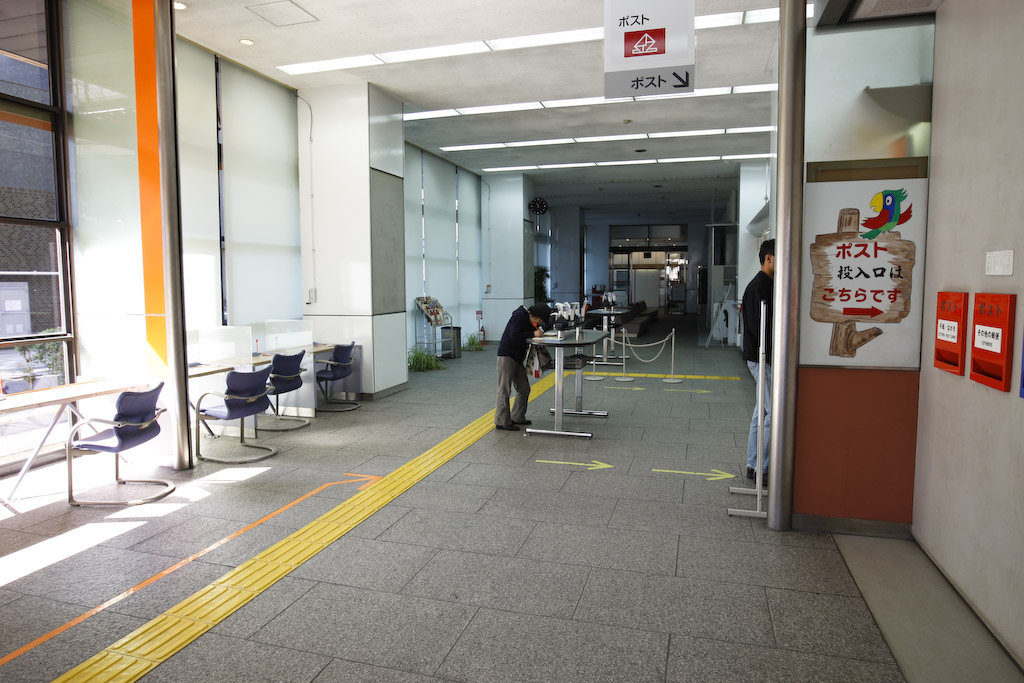ATM’s are almost exclusively found inside buildings in Japan yet commonly accessible directly from the street in cities like Helsinki or London.
The relatively low recorded incidence of street crime in Japan suggests that public spaces are an ideal location to situate ATMs. Except that, generally, Japanese people are more likely to feel uncomfortable carrying out ATM transactions in public spaces preferring instead the relative privacy afforded by a building even if it’s nothing more than a glorified lobby. Perhaps there are other factors at play: that in Japan ATMs are more likely to be used for more complex transactions than just cash withdrawals – whether for money transfers or and bill payments; and that in a cash driven society people are more likely to withdraw larger sums of money; its also more common for the ATM to give voice feedback on the current status of the transaction?
A more subtle example of the need for transaction privacy can be found by looking at the central divide of bank and post office tables – in Japan customers are likely to feel uncomfortable and complain if their form filing can be witnessed by others in close proximity. The net result – it is common to find a raised central divide that acts as a privacy shield.
And what if anything, has this got to do with service design?
The future perfect will increasingly include touch based payments systems such as Edy or similar – and a multitude of public electronic feedback mechanisms from LED displays on Suica vending machines to high definition flat screen displays. The granularity of possible feedback will range from simply showing the remaining credit on your card to a photo of you, your entire transaction history. What to reveal when? What are the cultural, contextual differences?
Cheers DM for the pointers/sake.
